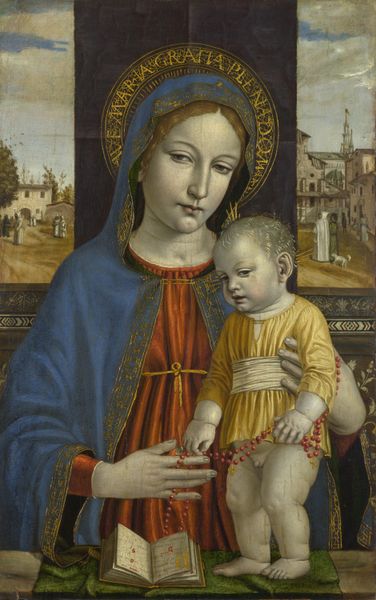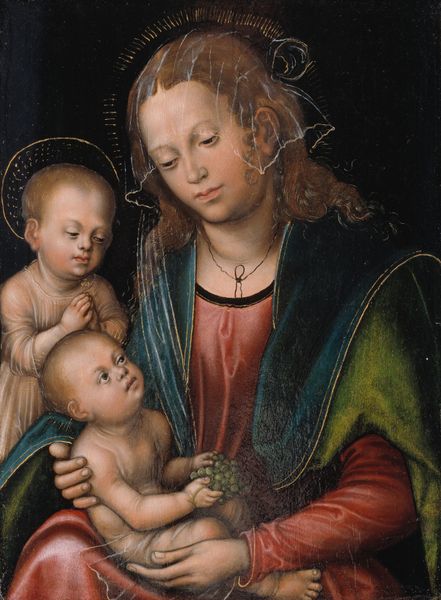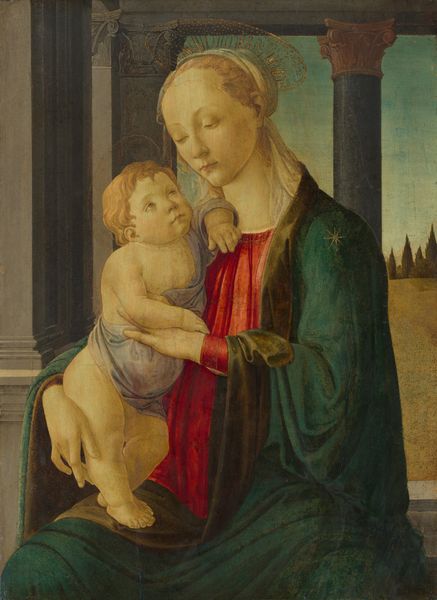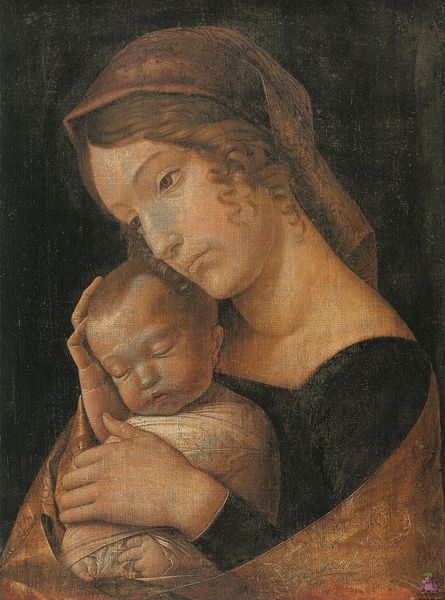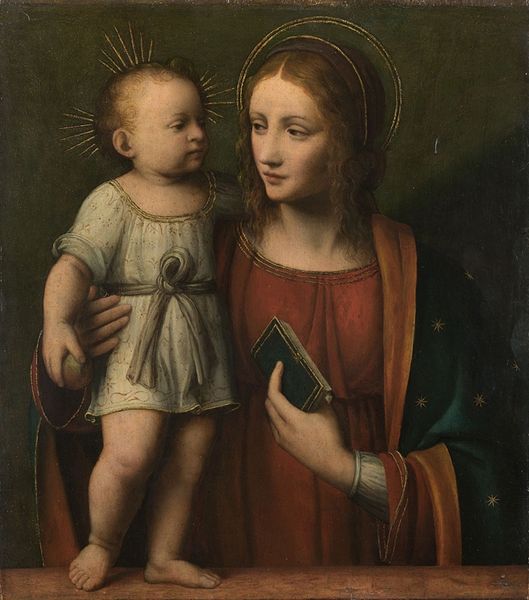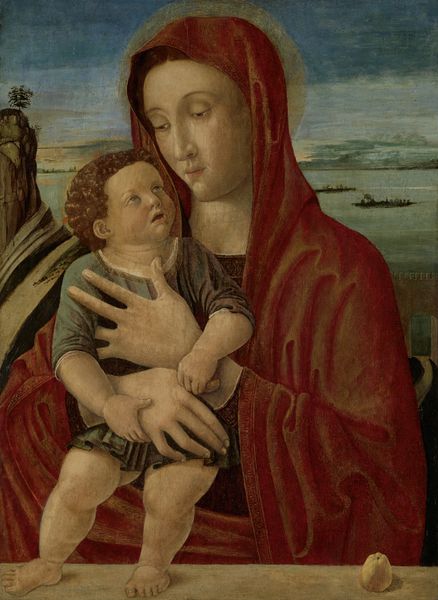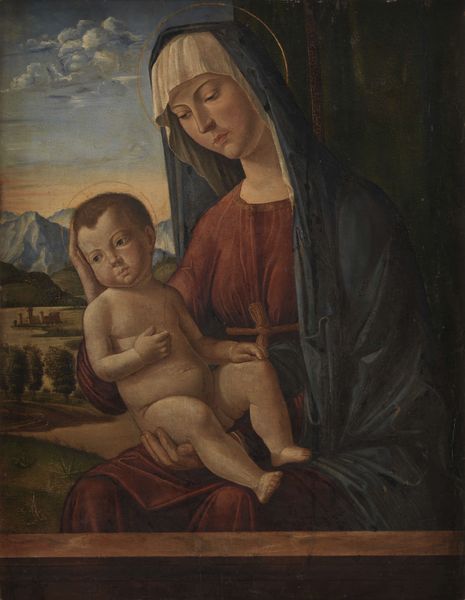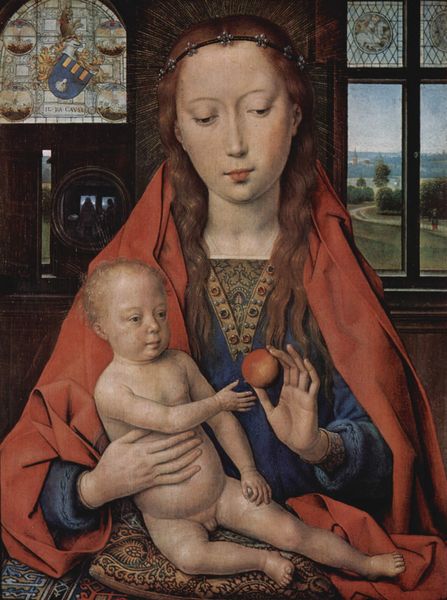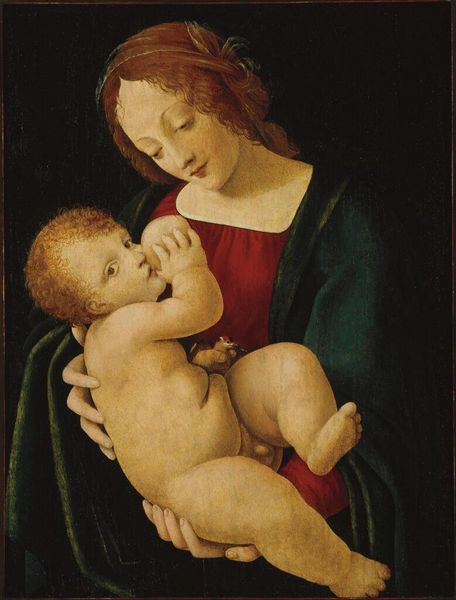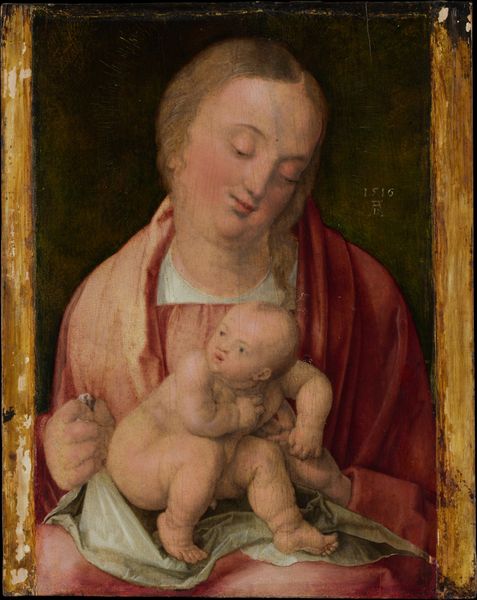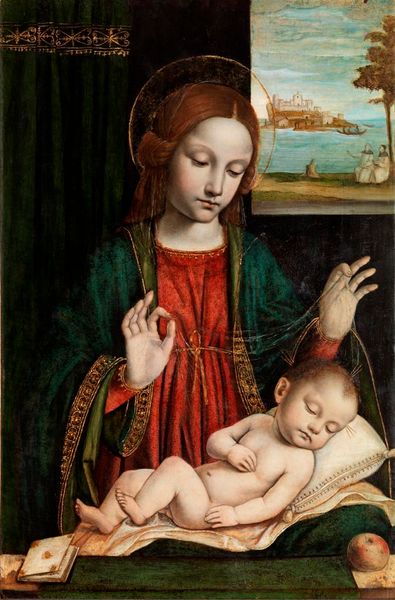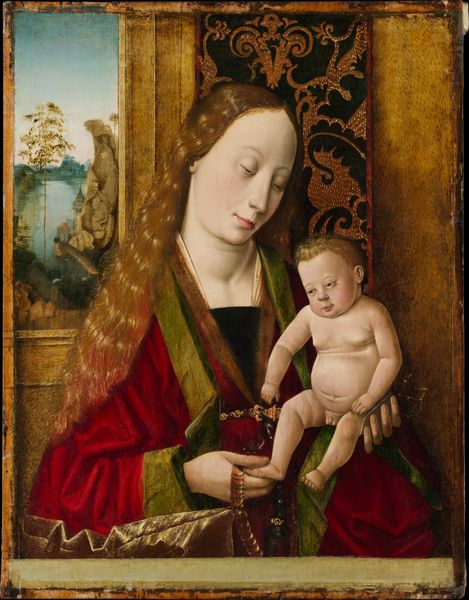
oil-paint
#
portrait
#
high-renaissance
#
oil-paint
#
figuration
#
oil painting
#
italian-renaissance
Dimensions: height 39.3 cm, width 29.4 cm, thickness 1.2 cm, depth 2.4 cm
Copyright: Rijks Museum: Open Domain
Curator: I'm struck by the tenderness in this early 16th-century oil painting. It's called "Virgin and Child" and attributed to Francesco Napoletano, active in Leonardo da Vinci's orbit. Editor: The first thing that jumps out is the mood; it's… introspective, almost melancholy. Is it just me, or does it feel like a rainy afternoon kind of painting? The baby clutching that poor little bird doesn't help either. Curator: The imagery would certainly be familiar to viewers of the time. The Madonna and Child theme is rich with symbolic weight, a meditation on divine love and human fragility. Birds, in particular, can represent the soul. Christ's holding one foreshadows the Passion, connecting his infancy with his ultimate sacrifice. Editor: Oh, absolutely. Knowing all that juicy context adds layers. Suddenly, it’s not just a picture of a mum and bub. That bird becomes, like, a stand-in for mortality? Morbid, but Renaissance art did love its allegories. But you gotta wonder, did ordinary people back then pick up on all this super-refined symbolism? Or did they just see a lovely picture of maternal tenderness? Curator: I think the symbols permeated the culture so deeply that many would have grasped those underlying meanings instinctively. The gaze of the Madonna, averted, reinforces this contemplative mood. The deep colours also create a feeling of reverence and perhaps even foreshadowing. Editor: See, for me, the power lies in its emotional directness. The muted tones make you focus on their faces. Plus, that touch of red in Mary's ornament just *pops*. Simple but effective! The rough painting and shading lend a real intimacy. Even if you're clueless about the bird thing. Curator: Perhaps its evocative qualities can speak to the range of interpretation this kind of work sustains across eras. Editor: Agreed. There’s this timeless, universal thing about it that anyone can latch onto regardless of how deep you want to dive into the symbols and history. It’s one of those artworks that kinda sneaks into your heart, you know?
Comments
No comments
Be the first to comment and join the conversation on the ultimate creative platform.
